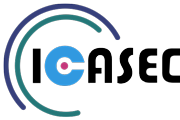“The scientist is motivated primarily by curiosity and a desire for the truth.”
Irvin Langmuir, Nobel Laureate in Chemistry
Experiences of Supported Students and Scientists
Boomerang Program
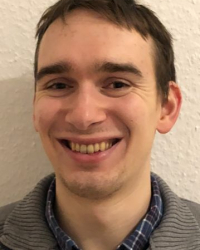
Till Schmidt-Räntsch
I have studied chemistry at the University of Göttingen and received my bachelor in 2017 and my master by the end of 2019. The topic of my bachelor thesis in the group of Prof. Sven Schneider was square-planar iridium(I) hydrides and their reactivity, with a focus on CO2 activation and reduction.
For my master thesis, I wanted to get some more experience in synthetic chemistry, while also getting to know the field of bioinorganic chemistry better. In 2019, the ICASEC Boomerang program enabled me to visit the group of Prof. Theodor Agapie at Caltech for six months. There, I did my master thesis about the synthesis of new thiolate ligands which would be able to model the coordination of iron as in the enzyme Nitrogenase, which produces ammonia from atmospheric dinitrogen. During that time, I not only improved my knowledge in synthetic chemistry, but also got an insight into the research of other Caltech chemists.
For my Ph.D., I came back to the group of Prof. Schneider, where I am now working on pincer complexes of palladium. I am very grateful to ICASEC’s Boomerang program, which made my stay in the US possible. This research stay improved my chemical knowledge and allowed me to also develop personally.
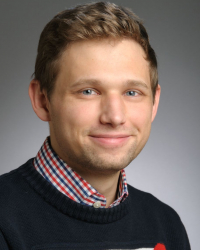
Patrick Floß
My name is Patrick Floß and from October 2014 to October 2019 I have studied chemistry at the Georg-August University Göttingen. After my bachelor thesis in 2017 in the group of Prof. Alec M. Wodtke on the interaction of hydrogen atoms with a graphene covered Pt(111) surface, I studied the interactions between molecules and surfaces during my master thesis in 2019. To be more precise I investigated the dissociative chemisorption of methane on stepped Pt(211) and Ni(211) surfaces in the group for gas-surface dynamics of Prof. Rainer D. Beck at the École Polytechnique Fédéral de Lausanne (EPFL), Switzerland. Thanks to the financial support of the ICASEC Boomerang stipend I could fully focus on my research during my 6 months stay in Lausanne. During my master thesis in Lausanne I got new insights in the way molecules interact with surfaces and was introduced to new experimental techniques which will be helpful for my PhD.
For my PhD I am looking forward to intensify the collaboration between the two groups and use my acquired knowledge to further contribute to the research in this very interesting field of surface science.
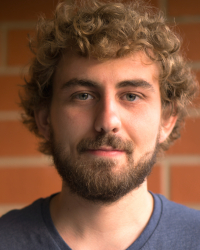
Johannes Otto
The ICASEC Boomerang program enabled me to visit the group of Prof. Tenio Popmintchev at University of California, San Diego, during my Master thesis. The project for my thesis in the group of Prof. Dr. Stefan Mathias is to set up an experiment to measure the element-specific demagnetization dynamics of ferromagnets after getting excited by an ultrashort laser pulse. Due to the element-specificity, this experiment demands the usage of extreme ultraviolet light that can be generated with a High-Harmonic-Generation-based light source. One of the leading research groups in High-Harmonic-Generation is the group of Prof. Tenio Popmintchev from the University of California, San Diego. In 2012, for instance, Popmintchev et al. did show how to efficiently create ultrashort soft X-ray pulses from a tabletop laser source (Science 336, 1287).
With the support of the Boomerang program, I was able to join the group of Prof. Popmintchev for three months in the end of 2019. This enabled me to gain insight in the recent developments of extreme-ultraviolet light sources and the processes and requirements for the generation of soft X-Ray radiation with High-Harmonic-Generation. Being part of the University of California, San Diego, introduced me to the research environment of Universities in the United States and enabled me to extend my network significantly.
I am highly grateful for ICASEC to support my visit at the group of Prof. Popmintchev, that helped me to broaden my horizon and successfully improve my personal and professional skills.
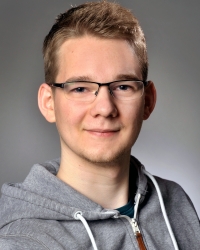
Jascha Lau
My name is Jascha Lau and I have studied chemistry at the University of Göttingen. For my master’s thesis in 2016, I got the opportunity to work in the Surfaces, Microstructure and Fracture Group at the Cavendish Laboratory (University of Cambridge, UK) for six months.
I worked on a machine designed for quasi-elastic helium atom scattering with exceptional energy resolution, called helium-3 spin-echo spectroscopy, which I used to study the molecular diffusion of cyclooctatetraene adsorbates on a Cu(111) surface. It allowed me to get a profound understanding of various aspects important to surface science, e.g. surface diffusion and phonons, and I developed my experimental and technical skills necessary for working on such complex experiments. All that has proven very useful for my current PhD project in the group of Prof. Wodtke in Göttingen. It involves the study of vibrational energy transfer between molecules adsorbed at surfaces by means of time-resolved laser-induced infrared fluorescence.
With the support from the ICASEC, I was able to fully focus on my research. In addition, I got the chance to present the results of my Master’s thesis at the Third International Conference on Scattering of Atoms and Molecules from Surfaces in Bergen, Norway, which made it possible to share and discuss my results with other scientists working in this field.
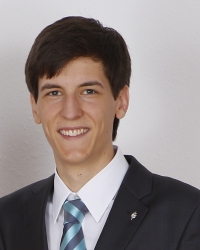
John Henri Gaida
I am studying Physics in Göttingen and did my bachelor thesis in 2015 in the group of Claus Ropers on Ultrafast Hot Carrier Photoluminescence in Graphene. During my master studies I wanted to gain experience abroad and so I approached Prof. Ropers about it. He told me about ICASEC’s Boomerang program and also suggested some suitable groups for a short research visit before my master thesis. I decided to ask the group of Giulio Cerullo and Dario Polli if I could come for a three-month research stay at the Politecnico di Milano, Italy, which are well known in the area of ultrafast laser science.
Starting from April 2015 I had the chance to build an interferometer developed in their group which is based on birefringent crystals. We used it to give a standard time correlated single photon counting (TCPSC) setup for time-resolved fluorescence detection spectral resolution via a Fouriertransform approach. We successfully investigated test samples of fluorescent dyes and a biologically relevant photosynthetic light-harvesting complex. The results of my stay are summarized in a paper published in Optics Express – Time- and frequencyresolved fluorescence with a single TCSPC detector via a Fouriertransform approach.
Not only did I acquire new skills in the lab and got to know another Research group, but I also made good new contacts. Now I am finishing my master’s studies with a thesis in the group of Claus Ropers where I am working on an experiment to resolve ultrafast magnetic dynamics with an Ultrafast Transmission Electron Microscope (UTEM).
International Research Visits
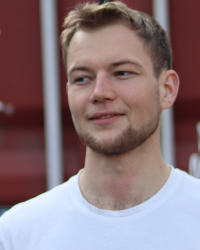
Nils Jacobsen
I have studied physics at the University of Göttingen, receiving my bachelor’s degree in 2021 and my master’s degree in 2024. During my studies, I specialized in the field of theoretical condensed matter physics. After an internship in the experimental research group of Prof. Thomas Weitz, I did a master’s thesis in the field of graphene nanoelectronics at the interface of theory and experiment in that group. The aim was to provide a theoretical footing for quantum transport experiments on Bernal bilayer graphene. The project was part of a collaboration with Prof. Leonid Levitov a condensed matter theorist from the Massachusetts Institute of Technology, supervising me from the theoretical side.
During the time of my thesis, we had a very productive time working on magnetotransport and correlated phases in the vicinity of Lifshitz transitions in bilayer graphene. Due to the generous funding of ICASEC, I could conclude my thesis with a research visit in Boston at MIT for one month in November 2023, where we worked on a publication and developed ideas on the theoretical foundation of Stoner magnetism.
The visit was a fantastic opportunity to do interesting research and meet other scientists and I am very thankful for the support by ICASEC.
As of 2024, I am doing my PhD in physics at the University of Bremen and the Max Planck Institute for Structure and Dynamics of Matter in Hamburg.
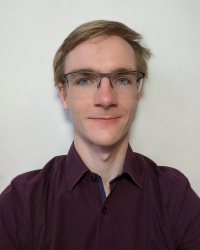
Arved C. Dorst
My name is Arved C. Dorst and I received my bachelor’s and master’s degree in chemistry at the Georg-August University of Göttingen in 2019 and 2021, respectively. For my bachelor’s thesis, I studied the nature of atomic (AO) and molecular oxygen (MO) on Rh(111). During my master’s thesis, the velocity-resolved kinetics of surface reactions on Rh(111) were examined in a collaboration with Daniel R. Killelea from Loyola University, Chicago (Dorst et al., Phys. Chem. Chem. Phys. 24, 26421 (2022)).
Since January 2022, I conduct research on the velocity-resolved kinetics of enantioselective epoxidation reactions on chiral surfaces. One of the projects is the epoxidation of achiral styrene to the chiral compound styrene oxide on Ag(111). The oxirane moiety’s formation, its ring opening and closure due to interactions with the metal surface can be examined by reflection absorption infrared spectroscopy (RAIRS), inter alia.
These RAIRS experiments are not possible in Göttingen. However, thanks to ICASEC I could continue the collaborative projects with Daniel R. Killelea and conduct the required RAIRS experiments in his lab. I could totally focus on my research during the stay and the experimental skills I learned willdefinitely help me in my scientific future.
Additionally, due to ICASEC’s financial support I was able to attend the AVS 68th international symposium & exhibition in Pittsburgh. The AVS 68 is one of the world’s largest conferences in the surface science community. At the symposium I gave an oral presentation about the latest results of my research and could discuss its findings with leading scientics from the dynamics at surfaces community. Combined with the poster sessions by young researchers from all other the world, the broad yet still detailed insights into the fields of surface science and vacuum technology will be of great benefit for my future research.
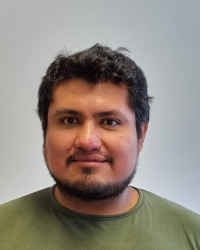
Guillermo Durán Solares
My name is Guillermo Durán Solares and I am a Ph.D. student in the group of Prof. Franc Meyer in the Inorganic Chemistry Department at the Georg-August Universität Göttingen. I have completed my bachelor’s and master’s degree in Chemistry at Universidad Nacional Autonoma de Mexico (UNAM) in Mexico City, Mexico, I worked on antineoplastic agents of transition metals complexes in that phase of my studies. Currently in my Ph.D., I am investigating on biomimetic oxygen activation with copper complexes of proton-responsive bis(oxazoline) and bis(benzimidazole) ligands.
In April 2022, ICASEC supported my International Research Visit in the group of Prof. Wesley Browne, at the Stratingh Institute of Chemistry of the University of Groningen, in Groningen, Netherlands. I would like to thank this one-month stay. Using this experience, I could apply the leading expertise of Prof. Browne in Resonance Raman (rR) spectroscopy to get useful insight on a Cu2O2 complexes, in order to get structural information of such complexes. I could get in touch with leading experts of the field on rR spectroscopy, learn new useful spectroscopic techniques, and maintain a fruitful collaboration with an international research group, due to the invaluable support which I received from ICASEC. ICASEC contributed a lot to sharpen my knowledge and enhance my research skills.
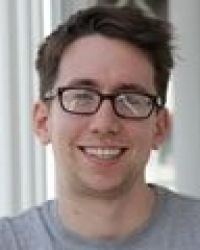
Jerome Spyra
My name is Jerome Spyra and I studied chemistry at the university of Göttingen. During my bachelor and master thesis I worked on the investigation of bioinspired metal complexes. Currently, I am working on my PhD in the field of reactive oxygen and nitrogen species in connection with copper complexes. With the help of ICASEC I had the opportunity to do a research stay for three weeks in Brest (France) in March 2019. Under the supervision of Nicolas Le Poul at the Université de Bretagne Occidentale, I was able to extend my knowledge of low temperature cyclic voltammetry and was able to conduct several experiments that gave me further insights of the electrochemical properties of my copper complexes. Therefore, ICASEC has been very helpful for the progress of my research.
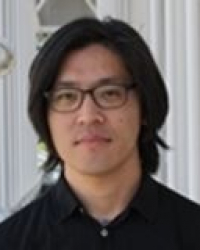
Shao-An Hua
My name is Shao-An Hua, currently a postdoc researcher in the group of Prof. Franc Meyer in the Inorganic Chemistry Department at the University of Göttingen. One of my research topic is catalytic water oxidation. On October, 2019, with the financial support from ICASEC, I spent two weeks in the group of Prof. Llobet at the Institute of Chemical Research of Catalonia (ICIQ) in Tarragona, Spain. The ICIQ is ICASEC partner institute, and it provides a stimulated environment to conduct the desired mechanistic investigation on the ruthenium catalysts. With the expertise of Prof. Llobet and fruitful discussion with his group members, I was able to broaden my view of the field of catalytic water oxidation.
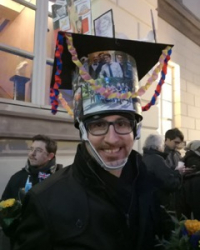
Stefan G. Resch
My name is Stefan G. Resch and I finished my Ph.D. in the group of Prof. Dr. Franc Meyer at the Institute of Inorganic Chemistry of the Georg-August University Göttingen in the end of 2018; working on “Dinuclear Copper and Nickel Complexes of New Multidentate N-herocyclic Carbene Ligands”.
In 2018, ICASEC gave me the financial support and the great opportunity to spend one month in the groups of Dr. Carole Duboc (Université d’Alpes) and Prof. Dr. Vincent Artero (CEA) in Grenoble, France, to investigate dinuclear nickel(II) pyrazolate/N-heterocyclic carbene complexes for electrocatalytic proton reduction. The proton reduction and the reaction mechanism were investigated using different complex concentrations, temperatures, acid additions and different analytic techniques (e.g. cyclic voltammetry, bulk electrolysis, gas analysis via GC TCD and EPR spectroscopy). Thanks to the ICASEC International Research Visit program, I was able to study the electrochemical behavior of my complexes under optimal laboratory conditions together with two renowned experts in the field of electrocatalysis related to bioinspired proton reduction. The fruitful discussions with them and their technical advices in performing those electrochemical experiments broadened my scope and significantly improved my knowledge in this field.
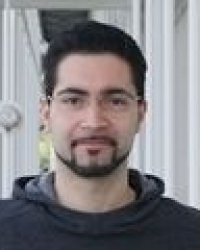
Massimiliano Morganti
My name is Massimiliano Morganti and I am a PhD in the group of Prof. Dr. Franc Meyer in the Inorganic Chemistry Department of the Georg-August Universität Göttingen. I have studied Chemistry in Pisa, Italy, and acquired there my Bachelor and Master’s Degree, working on organometallic Mo and W complexes, and on a new design of an organometallic stabilizer for the synthesis of gold nanoparticles. For my PhD, I am currently working on high-valent oxo-iron carbene complexes as models of biological enzymes involved in catalytic oxidation of organic substrates.
In 2018 ICASEC supported my International Research Visit in the group of Prof. Dr. Jana Roithová, at that time in the Department of Organic Chemistry of the Charles University in Prague, Czech Republic. Thanks to this one-week stay, we could apply the leading expertise of Prof. Roithová in IR-photodissociation spectroscopy to get useful insight on a series of oxo-iron(IV) complexes, in order to get information on the electronic structure of such complexes and on the Fe=O bond. Thanks to ICASEC precious help, I could get in touch with leading experts of the field of spectroscopy and electronic structures, learn new useful spectroscopic techniques and maintain a fruitful collaboration with an international research group.
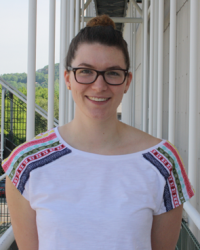
Jana Lücken
My name is Jana Lücken and I am a PhD student in the group of Prof. Meyer in the Inorganic Chemistry Department at the University of Göttingen working on water oxidation catalysts. In 2016, ICASEC gave me the financial support to spend three months in the group of Prof. Llobet at the Institute of Chemical Research of Catalonia (ICIQ) in Tarragona, Spain, a world-leading institute in catalysis research and an ICASEC partner institute. The ICIQ provided an ideal environment to conduct the desired photocatalytic measurements and get a deeper insight into the electrocatalytic behavior of the ruthenium catalysts. Additionally, with the expertise of Prof. Llobet and his group members I was able to significantly improve my knowledge of the field of catalytic water oxidation. Currently, I am finishing off my ruthenium project and trying to focus more on water oxidation catalysts with cheap and earth-abundant 3d-metals.
International Visitor Program
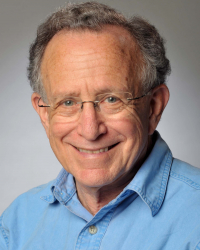
Daniel J. Auerbach
I have been involved with the Dynamics at Surfaces Department of Professor Alec M. Wodtke since the formation of the department in 2010. My early activities were largely funded under the auspices of a Gauss Professorship and a Humboldt Foundation Research Award. Initially I was involved mainly with setting up and designing new equipment for the group and research on electronically nonadiabatic effects in molecular collisions with metal surfaces. ICASEC support enabled me to continue and strengthen the collaboration with the department in the period 2016 to 2023, for which I am of course very grateful.
My work in this period was focused on the continuation of research in nonadiabatic effects and the development of the velocity resolved kinetics (VRK) technique for providing a new kind of data on the kinetics of chemical reactions at surface based on pulsed molecular beams and ion imaging detection. I was involved in the initial proof of principle experiments for the application of slice imaging to problems in molecular scattering from surfaces and in the design of the “Beamer 2” instrument for VRK that emerged from this work. My involvement in this work was broad including equipment design, getting experiments running, data analysis, writing papers, and mentoring of students.
The first system which showed the unique capabilities was CO oxidation on Pt. This was one of the most extensively studied reactions in surface science with a 200 year plus history. Despite this, the elementary steps in this reaction were not known and the VRK technique revealed there were three separate channels in the reaction that involved different active sites on the surface. Many additional exciting results have come out of this work including demonstration of the importance quantum effects in surface reactions, measurements of surprisingly high diffusion barriers in NH3 diffusion on metals with implications for the Ostwald process for NO production and new approaches to identifying intermediates in chemical reaction mechanisms.
I have also been involved with work with the Theory Group led by Sascha Kandratsenka, work which has been crucial to understanding the experimental results including development of a highly efficient code for doing kinetic Monte Carlo (KMC) calculations that we hope will enable understanding the results of VRK experiments. Sascha and I also developed an efficient code for analyzing data from VRK experiments done with a Timepix camera that gives timing information on individual ions detected in VRK. This code was more than 1000 times faster than the vendor supplied code and has been essential to the development of the highspeed VRK technique we are currently working on.
In summary, ICASEC support over the past 8 years has enabled me to continue collaboration with the Dynamics at Surfaces department with work that is both personally gratifying and resulted in many significant research accomplishments.
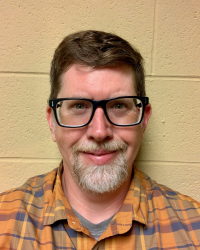
Daniel R. Killelea
The interaction of gas-phase molecules with metal surfaces is a cornerstone of modern chemical industry. However, key questions remain about exactly what surface species are present and their reactivities under reaction conditions. My group at Loyola University Chicago has spent the past several years developing an understanding of oxygenaceous species on catalytically active metal (e.g., rhodium or silver) surfaces, the structures present, and connecting individual surface phases to particular oxidation conditions. We have also studied how the incorporation of subsurface oxygen, oxygen atoms dissolved in the near-surface region of the solid, alters the chemistry and structure of metal surfaces.
It was a fantastic opportunity to collaborate with Dr. Tim Schäfer and Prof. Alec Wodtke in Göttingen, as the Wodtke group has developed unparalleled approaches to understanding the kinetics and mechanisms of surface-catalyzed reactions. Our goal was to used velocity slice ion imaging to measure the kinetics of oxidation reactions on the selected surface phases to unequivocally determine what phases would be most active. Over the past three years, and despite the interruptions related to the COVID pandemic, we have made significant progress.
ICASEC support allowed me to visit Göttingen twice, the first time in summer of 2019 and the second, for a shorter visit, in July 2021. The 2019 visit was primarily to set up a new molecular-beam surface scattering apparatus and to transfer the surface preparation techniques from Chicago to Göttingen. In 2021, along with Arved Dorst, a then-MS student, were able to conduct experiments on the recombinative desorption of oxygen from Rh(111) which showed that subsurface oxygen desorbs from a more energetic state than the surface, suggesting it would have enhanced reactivity as it emerges from the selvedge of the metal.
ICASEC support was integral to the development of this collaboration. In addition, the preliminary data and strong link between Chicago and Göttingen established with ICASEC support led to this project being funded by the NSF in the US, providing three years of support for our collaborative effort.
Daniel R. Killelea is associate professor at the Department of Chemistry & Biochemistry at the Loyola University Chicago, USA. Prof. Killeleas group is studying the structures of metal surfaces relevant to heterogeneous catalysis to provide insight to their fundamental chemistry. Their primary technique is ultra-high vacuum scanning tunneling microscopy. Of particular interest is the formation of subsurface species on transition metals.
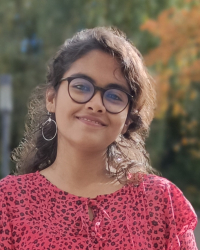
Indrani Dey
I am Indrani Dey. I am a master’s student in the Department of Physics at Jadavpur University in India. This year (2022) I visited the group of Prof. Alec M. Wodtke at the Institute of Physical Chemistry, University of Goettingen for three months with the help of the ICASEC fellowship. During this period, I worked on the velocity-resolved reaction kinetics of molecules on metal surfaces using Velocity Map Imaging (VMI) technic. Being an enthusiast of experimental science, I enjoyed working there and learned a lot about the advances in the field of surface dynamics. This experience has motivated me to pursue a career in research and to join Prof. Wodtke’s lab and the University of Goettingen as a Ph.D. student.
I am really grateful to ICASEC for supporting me on this trip financially and making it possible.
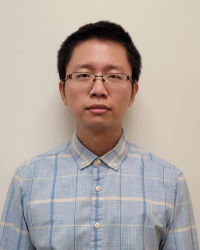
Andi Li
My name is Andi Li and I am a PhD student in physics in Prof. Hrvoje Petek’s group at University of Pittsburgh, USA. I work on the topic of coherent ultrafast multi-photon photoemission spectroscopy of noble metal surfaces. In February 2020, ICASEC funded me through the International Visitor Program for a 2-week research visit to Prof. Stefan Mathias’s group in University of Göttingen.
During my stay, we finished our planned measurements on the multidimensional two-photon photoemission spectra of the anisotropic Ag(110) single crystal surface using the state-of-art time-of-flight momentum microscope in the group. The data has been analyzed together with the multi-photon photoemission data taken in Pittsburgh and the theoretical calculation data done in Institute of Physics, Zagreb, Croatia. This collaboration across three countries has been published in Physical Review B as editors’ suggestion recently.
I greatly thanks ICASEC for providing me this opportunity and making this work possible and Stefan’s group for helping me with everything during my visit.
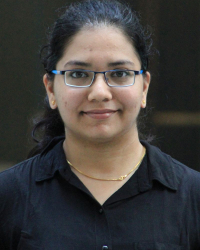
Shrreya Krishnamurthy
I am a Ph.D student and a Council of Scientific and Industrial Research (CSIR) Senior Research Fellow (SRF) with Prof. S.W.Gosavi at Savitribai Phule Pune University, India. My short-term research visit (2.5months) to Dr. Oliver Buenermann’s group was funded by DAAD (NAMASTE+ program). ICASEC provided me with the funding to extend this duration further by 6months.
My doctoral research is based on the semiconductors for energy efficient device applications specifically the material class of hybrid perovskites. During my research work (light-matter interactions), I realized there is a lot of fundamental surface dynamic studies required on semiconductors which is lacking in literature. This is crucial for better design of optoelectronic applications such as photo-catalysis and thermoelectrics. It led me to work by Dr. Oliver Buenermann on H-atom scattering from graphene surface. He was willing to give me an opportunity even though the field of surface dynamic scattering was entirely new to me. And was extremely supportive in helping me acquire a successful funding from DAAD (NAMASTE+ program) for a short visit for the project ‘Study of scattering from 2D materials’.
Due to the COVID019 pandemic, I was unable to return to India as planned. My extended duration of a 6-month stay here is generously being supported by ICASEC. The Rydberg Atom Tagging (RAT) machine gives a lot of information pertaining to the atomic surface of the material. I am grateful to Ms. Krestin Kruger (Ph.D student) for being patient with me and helping me understand the workings of the RAT machine. We started with basic semiconductors such as Si and Ge prior to exploring oxide-based semiconductors such as titanium oxide (TiO2) and strontium titanate (StTiO3). As a student stuck abroad during a crisis such as COVID-19, my gratitude towards the entire family at ICASEC knows no bounds for their timely and stead support.
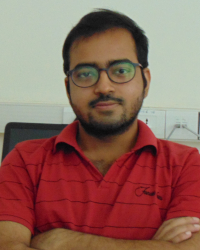
Debesh Bhattacharjee
I am Debesh Bhattacharjee, a PhD student at the Department of Physics of Indian Institute of Science Education and Research (IISER), Pune. My research area can be broadly classified as understanding the dynamics of Earth-directed solar coronal mass ejections (CMEs). I came to carry on my research under the supervision of Dr. Volker Bothmer in the Institute for Astrophysics, University of Goettingen as an International Exchange Doctoral Student funded by NAMASTE+ Student Exchange Programme (supported by DAAD) for a time span of three months (9th January, 2020 to 7th April, 2020). Due to sudden outbreak of covid-19 pandemic I could not return to India and from 15th June, 2020 onwards I have been funded by the ICASEC Programme.
The research which I have been doing with Dr. Bothmer’s group is a part of my doctoral thesis. During my stay, I have worked on the high-resolution in-situ data from the Helios spacecrafts (Helios 1 and Helios 2) and this has provided me a great opportunity to study the behavior of the solar coronal mass ejections (CMEs) on their way from Sun to Earth. It is quite well-known that Earth directed CMEs are the primary drivers of the space weather disturbances and play a crucial role in our today’s technology reliant society (e.g. CMEs can affect us by damaging the GPS system and power grids, cause disruption in satellite communication and create severe problems in astronaut safety etc.). So, a proper understanding of the dynamics, kinematics and evolution of these massive objects are undoubtedly very important in order to predict the CME arrival times and speeds at the earth, so that we can make some preventive measures about them. Helios data has provided me a wide range (from 0.29 AU to 1 AU, AU is the astronomical unit, the distance from Sun to Earth) for the observation of CMEs and using this data I have been concentrating on two major questions relating to the evolution of CMEs. Firstly, how does the aerodynamic drag affect the CME dynamics and how does it evolve as a function of heliocentric distance? This is crucial because aerodynamic drag force is assumed to be one of the two most important governing forces that deals with the momentum coupling between a CME and the solar wind. It can also give us the insight how different parts of a CME (namely the sheath and the magnetic cloud) behave from the perspective of withstanding the effects of the aerodynamic drag. The second part of my study has focused on the rms fluctuations of proton density inside a CME and their contribution in the CME heating rate while it is moving through the solar wind. We have got some very interesting results based on our theoretical study and data analysis and we hope that it needs some further investigations in the future.
I express my hearty gratitude towards Dr. Buenermann and the ICASEC programme to provide me such an opportunity to carry on my research in the University of Goettingen.
International Conference Visits
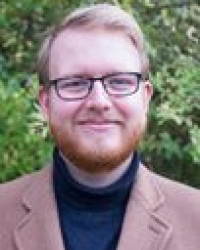
Christian Urbank
My name is Christian Urbank, and I completed both my Bachelor’s and Master’s degrees at Technical University Dresden. During my studies, I specialized in radio- and actinide chemistry, particularly through my master’s thesis conducted at Helmholtz-Zentrum Dresden Rossendorf (HZDR).
I am currently pursuing a PhD under the supervision of Prof. Vondung, focusing on the catalytic properties of uranium. The goal of my studies is to illuminate the effects of amphiphilic ligand systems on the reactivity of this fascinating 5f-element. ICASEC made it possible for me to attend the 11th International Conference on f-Elements (ICFE-11) in Strasbourg. Here, I had the opportunity to present my research in the form of a poster, giving me the honour of discussing my findings with esteemed researchers of my field.
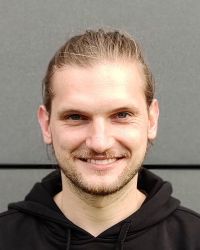
Nils Osterman
My name is Nils Ostermann and I am Ph.D. student in the group of Prof. Dr. Inke Siewert in the Institute of Inorganic Chemistry at the University of Göttingen. I completed my bachelor’s degree at the University of Bremen and came to Göttingen for my masters. I am working on electrochemical small molecule activation catalyzed by transition metal complexes.
With the help of ICASEC I was able to vistit the International Conference of Coordination Chemistry (ICCC) in Rimini/Italy in August/September 2022 and to present a poster of my current research. I came in touch with a lot of young researchers and was able to discuss my results with renowned professors from all over the globe. Especially after a long period of cancelled conferences due to the pandemic I am very grateful to ICASEC for making this trip possible.
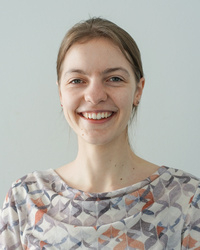
Karen Stroh
As a PhD student in the groups of Professor Vasily Moshnyaga and Professor Stefan Mathias at the Faculty of Physics, my focus of research lies in the area of complex oxides such as manganite thin films and in particular, in their time-resolved magnetization dynamics studied by ultrafast pump-probe spectroscopy.
The conference program of the MMM 2022 in Minneapolis (USA), the Annual Conference on Magnetism and Magnetic Materials, was a perfect match with my research interests. So, it was a great pleasure to have the opportunity – thanks to the support of ICASEC – of presenting some of my recent results there. Visiting such an internationally renowned conference really is a big chance to meet experts of the field and to get insights into cutting-edge research. I appreciate all the discussions and new input I could take home.
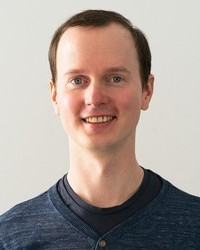
Vitaly Bruchmann-Bamberg
My name is Vitaly Bruchmann-Bamberg and I am currently a PhD student in the research group of Prof. Moshnyaga, working in the field of thermal transport in complex oxide nanostructures.
I gratefully acknowledge the financial support by ICASEC, giving me an opportunity to attend to the 67th Annual Conference on Magnetism and Magnetic Materials (MMM 2022) in Minneapolis, USA. There I could present and discuss our work on magnetic field-dependent thermal conductivity in colossal magnetoresistive manganites with experts from all over the world and exchange additional knowledge on sample systems and measurement setups. Participating in such an international conference in person after years of cancelled symposiums due to Covid restrictions was a very valuable experience, which I also highly recommend to all other students.
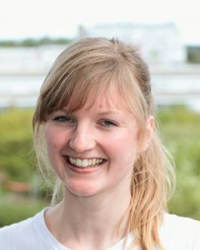
Kerstin Krüger
My name is Kerstin Krüger and I am a PhD student in the “Dynamics at Surfaces” group of Prof. Alec Wodtke. My research project focuses on the study of translational energy transfer from hydrogen atoms to different surface samples using inelastic scattering. We focus especially on simple systems to provide benchmark data for comparison with theoretical results and thus to obtain a molecular level understanding of physical processes that occur at surfaces.
In July 2019, ICASEC gave me the financial support to attend the Gordon Research Seminar and Gordon Research Conference on “Dynamics at Surfaces” in Newport, Rhode Island. There, I had the chance to present first results of my project in form of a poster and to discuss these findings with young researches and leading scientists also working in the field of Dynamics at Surfaces. Moreover, the seminar and the conference gave me the opportunity to learn more about ongoing research, to broaden my mind in the field of surface dynamics and to meet leading researchers.
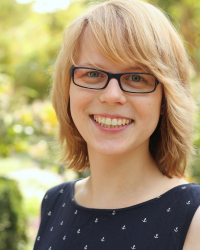
Christina Möller
I currently pursue a PhD in the group of Prof. Mathias working on a high harmonic source which delivers extreme ultraviolet light for time-resolved photoemission and magneto-optical studies. The goal of our research group is to get a microscopic understanding of energy conversion processes in materials on ultrashort time scales.
ICASEC made it possible for me to attend the Joint 5th International Symposium on Frontiers in Materials Science & 3rd Nano-materials, Technology and Applications (FMS 2019 & NANOMATA 2019) in Vietnam. Presenting my PhD research in a contributed talk gave me the possibility to interact and discuss my results with different experts in the field of ultrafast magnetism. It’s fabulous to share knowledge and create new ideas by discussing the physics and comparing different techniques.
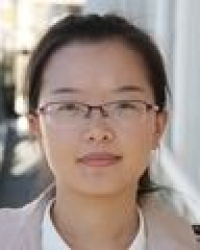
Ming Li
I am a PhD student in the group of Prof. Franc Meyer at the Institute of Inorganic Chemistry. I really appreciate to be given a financial support by ICASEC to attend “3rd Small Molecule Activation Conference” held in Nassau, Bahamas in February 2019. The conference provided me an opportunity to present my recent work on molecular N2 activation in the form of a poster and familiarize with the current research on small molecule activation from esteemed professionals all over the world. I could also be able to communicate with the experts face to face, which gives me very useful input for my own research.
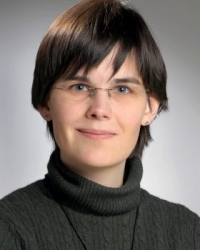
Svenja M. Janke
When I attended the GRS and GRC “Dynamics at Surfaces” in Newport, Rhode Island, in 2015, I was a Ph.D. student in the research group of Prof. Dr. Alec Wodtke. Both the seminar and the conference provided me with opportunities to broaden my knowledge of the field, to obtain very helpful input to further my own research and to establish important contacts for my future career. Furthermore, I had the chance to present a poster about my own research to the community, for which I received one of the conference’s poster awards. After the conference I was able to visit two leading research groups, namely the group of Prof. Dr. John Tully at Yale and the group of Prof. Dr. Jens Nørskov at Stanford. An additional summer school followed the latter visit at the same place. Both visits were excellent opportunities to connect with scientists of high renown, to learn more about their research and to look for possibilities for postdoctoral research. All in all, I had many excellent opportunities to present my own research, to shape my scientific future, to learn about future research directions and to meet leading researchers in the field of surface Dynamics.
Now I am a postdoctoral researcher on a DFG postdoctoral fellowship in the group of Associate Professor Dr. Blum at Duke University. My work here is focused on the computational design and prediction of the structure and properties of new semiconducting organic-inorganic hybrid materials.
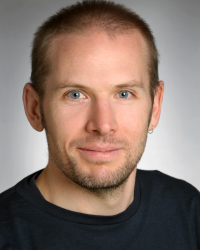
Dan Harding
Attending the GRC “Dynamics at Surfaces” in Newport, Rhode Island gave me the opportunity to meet, and talk science with, the leading researchers in surface dynamics. This broadened my knowledge of the field and helped me make contacts that will be useful throughout my career.
I am currently an assistant professor at KTH – Royal Institute of Technology, in Stockholm, Sweden, where I am setting up my own group to do surface reaction dynamics with the goal of understanding how and why reactions happen on surfaces.
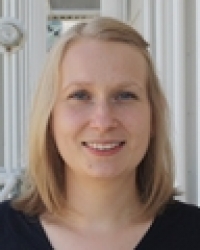
Claudia Schremmer
I’m a PhD student in Prof. Dr. Meyer’s working group and presented a poster at the EuCheMS Inorganic Chemistry Conference (EICC-4) 2017 in Copenhagen on “Iron Complexes of Macrocyclic Tetracarbenes: Robust Scaffolds for the Transformation of Small Molecules”. The ICASEC International Conference Visits program enabled me to participate in this event and discuss my results with experts in the field of energy-related research. Additionally, the EICC-4 presented valuable networking opportunities.

Jana Lücken
In July 2017, ICASEC gave me the financial support to attend the 2nd International Solar Fuels Conference including the preceding Young Conference in San Diego, USA. Here, I was able to present my collected results on ruthenium water oxidation catalysts in the form of a poster and get valuable feedback from experts in the field of artificial photosynthesis. Especially the young conference was very productive as it allowed me to discuss my research with other PhD students and postdocs with a similar scientific background as myself.
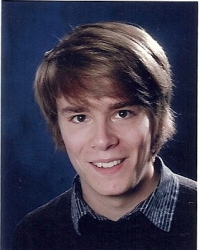
Roman Wagner
My PhD project in Prof. Alec Wodtke’s group “Dynamics at Surfaces” focuses on the interaction of highly vibrationally excited molecules with metal surfaces. When scattering a molecular beam of CO(v = 17) from an atomically clean Au(111) surface, we observe vibrational relaxation which is thought to proceed via an electron transfer from the metal to the molecule. The comparison of different molecule/surface systems indicates that the degree of this electronically non-adiabatic interaction scales with the work function of the metal and the vibrational state dependent electron binding energy of the molecule. At the Gordon Research Seminar on “Dynamics at Surfaces” in Newport, I had the chance to discuss these findings with young researchers from all over the world. Immediately after the Seminar, I took part in the Gordon Research Conference on “Dynamics at Surfaces”, where leading scientists of the field reported on their latest results. Intense and fruitful discussions with theoreticians and experimentalists at the poster sessions were very stimulating and promoted the understanding of mechanisms behind the phenomena that we observe in the laboratory. Thus, I gratefully acknowledge the financial support by ICASEC which allowed me participating in this conference.
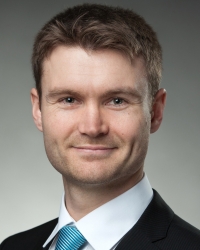
Jannis Neugebohren
The ICASEC International Conference Visits Program allowed me to attend the Gordon Research Conference “Dynamics at Surfaces” in Newport in 2015. The invited speakers and especially the poster sessions encouraged me to get an overview of the state-of-the art experiments and theory in my field. Combined with the superb scientific atmosphere this further increased and broadened my interest in the field and thus helped me prepare for the following experiments.
Start-Bridge-Finish Program
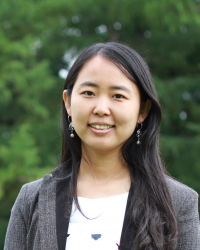
Lin Tian
My research interest lies in the structure-mechanical property relationship of amorphous materials. The amorphous structure, in direct contrast to crystalline structure, lacks long-range order and is not well understood up to now. Without a clear definition of amorphous structure, the deformation mechanism of amorphous materials remains ambiguous. In recent years, the 4-dimensional scanning transmission electron microscopy (4D STEM) opens the opportunity to reveal the heterogeneities in amorphous structure which has great impact on the mechanical properties of amorphous materials. Taking advantage of 4D STEM a unique environmental transmission electron microscope (ETEM) I was able to study structural evolution of a Cu-Zr amorphous alloy in hydrogen gas and the effect of hydrogen charging on its mechanical properties.
I got my Ph.D. degree in 2014 in Xi’an Jiaotong University, China. The research topic of my Ph.D. thesis is the mechanical properties of micro- and nano-scale metallic glasses. I studied deformation behavior of metallic glasses using in-situ mechanical loading techniques inside a transmission electron microscope. From May 2016, I worked with Prof. Cynthia Volkert in the Institute of Materials Physics with a fellowship from the Alexander von Humboldt foundation. Thanks to the Start-Bridge-Finish Program from ICASEC, I was able to apply for new funding and continue my work in Göttingen with the hope make progress in understanding of deformation mechanism of amorphous materials.
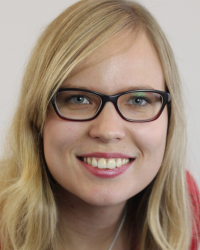
Mona Maaß
Thanks to ICASEC I could finish my PhD project in which I studied the relation between the microfibril-reinforced composite structure and the splitting fracture toughness of pine wood cell walls. In-situ electron microscopy fracture tests revealed a previously unknown toughening mechanism: Cracks are guided to the interface between the cell wall layers S1 and S2. Then, they are repetitively arrested and deflected along this interface in a zig-zag path. In this way, cracks are trapped at a tough interface. The structural origin is the specific arrangement of the cellulose microfibrils.
We suggested that this is a natural adaptation of wood to increase the toughness of wood cell walls and that the microfibril structure near the S1/S2 interface might be mimicked to improve the toughness of engineering fiber-reinforced composites.
Beside my PhD project, I have coordinated the public outreach activities of the CRC 1073 and profited from a fruitful cooperation with ICASEC. Collaborative public outreach activities were participations in local public events and the implementation of camps at the XLAB – Göttingen experimental laboratory for young people.
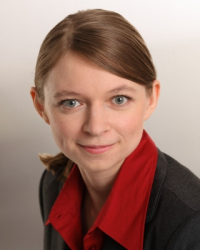
Sabine Steil
My research area is in interfacial electron dynamics at hybrid metal-organic heterostructures, which perfectly fits to the fundamental research topics of ICASEC. In this field, I did a PhD at the TU Kaiserslautern in 2014. After two parental leaves, I was searching for new opportunities: I wanted to quickly resume my research efforts in the field of energy studies, and also explore new possibilities to build-up a scientific career. Here, ICASEC did help me with fast, uncomplicated and straightforward funding of my position. Meanwhile, I was successful in achieving own funding through the Dorothea Schlözer Program at the University of Göttingen.
I am carrying out my experiments in the research group of Prof. Mathias from the I. Institute of Physics. We are combining new concepts in MHz repetition rate extreme ultraviolet generation with new concepts in spatially resolved time-of-flight momentum microscopy. This tabletop setup enables unprecedented momentum-, energy- and time-resolved studies of the electronic degrees of freedom of materials. Using these techniques, we want to study electron dynamics (time- and angle-resolved photoelectron spectroscopy), orbital dynamics (time-resolved orbital tomography) and structural dynamics (time-resolved photoelectron diffraction) of correlated systems.
Using the latter enables observing structural changes during and after an extrinsic excitation. As the structure of a molecule/material is directly relevant for its functionality due to the electron-lattice correlation, this method gives direct access, for instance, to energy transfer, phase transitions, as well as multistep chemical processes. During my Dorothea Schlözer postdoc we will focus at establishing time-resolved photoelectron diffraction as a tool to investigate the structural dynamics of correlated systems like molecule/metal interfaces or 2D transition-metal dichalcogenide materials.
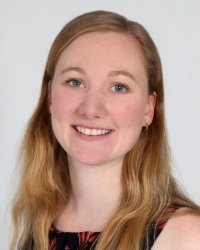
Anna Sinterhauf
To turn graphene into a true candidate material for future electronic device applications one important issue is controlling the Dirac point by doping. This will allow to tailor the charge carrier density, i.e. the electronic properties of a graphene sheet by lateral band structure engineering. Within this project we will explore the perspectives of ion beam implantation for controlled doping of graphene. This is a joint project in close collaboration with the group of Prof. Hans Hofsäss (University of Göttingen). Our common goal is to maximize the degree of doping while minimizing the magnitude of charge carrier scattering by lattice defects. More specific, we will explore the limits of low energy ion beam implantation by optimizing the preparation process as well as by searching for alternative dopant species. My task within this joint project is the characterization of these samples by room and low temperature scanning tunneling microscopy and spectroscopy. In order to additionally analyse defects on the nanoscopic scale, Kelvin probe force microscopy (KPFM) will be used to determine transport parameters on a mesoscopic scale.
I studied physics in Göttingen and finished my master’s thesis about structural and transport properties in graphene on the atomic scale in July 2017 in the group of Martin Wenderoth. Thanks to support by ICASEC I was able to directly pursue my research in the field of transport in graphene within a PhD thesis.
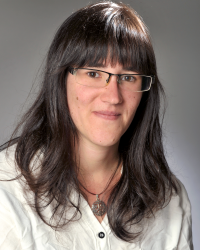
Oihana Galparsoro
The development of the theoretical description and understanding of gas-surface interactions is of great interest for many important industrial processes. In particular, the dynamics of such interactions might play a crucial role in the processes. In this context, the validity of the commonly employed Born–Oppenheimer approximation (BOA) is an important issue, since although satisfactory agreement between electronically adiabatic simulations and experiments has been achieved in some cases, there is clear evidence of relevant amount of electron-hole (e–h) pair excitations being created when chemical compounds interact with metal surface.
During my joint PhD among the University of the Basque Country and the University of Bordeaux, we studied the effect of e–h pair excitations in non thermal recombination processes on metal surfaces (Eley-Rideal and Hot-Atom recombinations). Since June of 2017, thanks to the support of ICASEC to start a new project, I am in Prof. Alec Wodtke’s group “Dynamics at Surfaces” as a Postdoc. We are developing a new tool to describe theoretically thermal recombination processes on surfaces going beyond the BOA and accounting for electronic excitations. When it comes to surface reactions at or near thermal equilibrium that involve high reaction barriers, transition state theory (TST) is undoubtedly the most successful and widely employed theoretical approach. The main goal of this project is the development of TST introducing non-adiabaticity within the dynamic factor to a posteriori evaluate BOA’s validity in thermal desorption processes from metal surfaces.
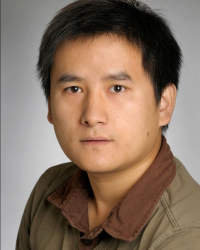
Chen Li
I received my PhD degree (Supervisor: Prof. Rainer Beck) in chemical engineering in 2012 from École Polytechnique Fédérale de Lausanne (EPFL) in Lausanne, Switzerland. Afterwards I moved to Max-Planck Institute for Biophysical Chemistry in Göttingen to start my postdoctoral research in Prof. Alec M. Wodtke’s group. The research project is to develope an ultra-sensitive mid-infrared emission spectrometer using a new emerging single-photon detector technology ‒ superconducting nanowire single-photon detectors (SNSPDs) which opens a path to a wide range of applications where extremely high sensitivity and excellent temporal resolution is required for molecular spectroscopy. The goal of the research is to study dynamics of molecular vibrational energy flow at solid surfaces. In other words, to answer questions such as: “what is the fate of molecular vibration excitation at surfaces?”, “how long will the vibration survive?”, and “what are the vibrational energy flow paths?” With the support of ICASEC, I could extend my postdoc stay in Gottingen, which enabled me to finished two manuscripts and allowed an overlap with my successor for technology transfer.

